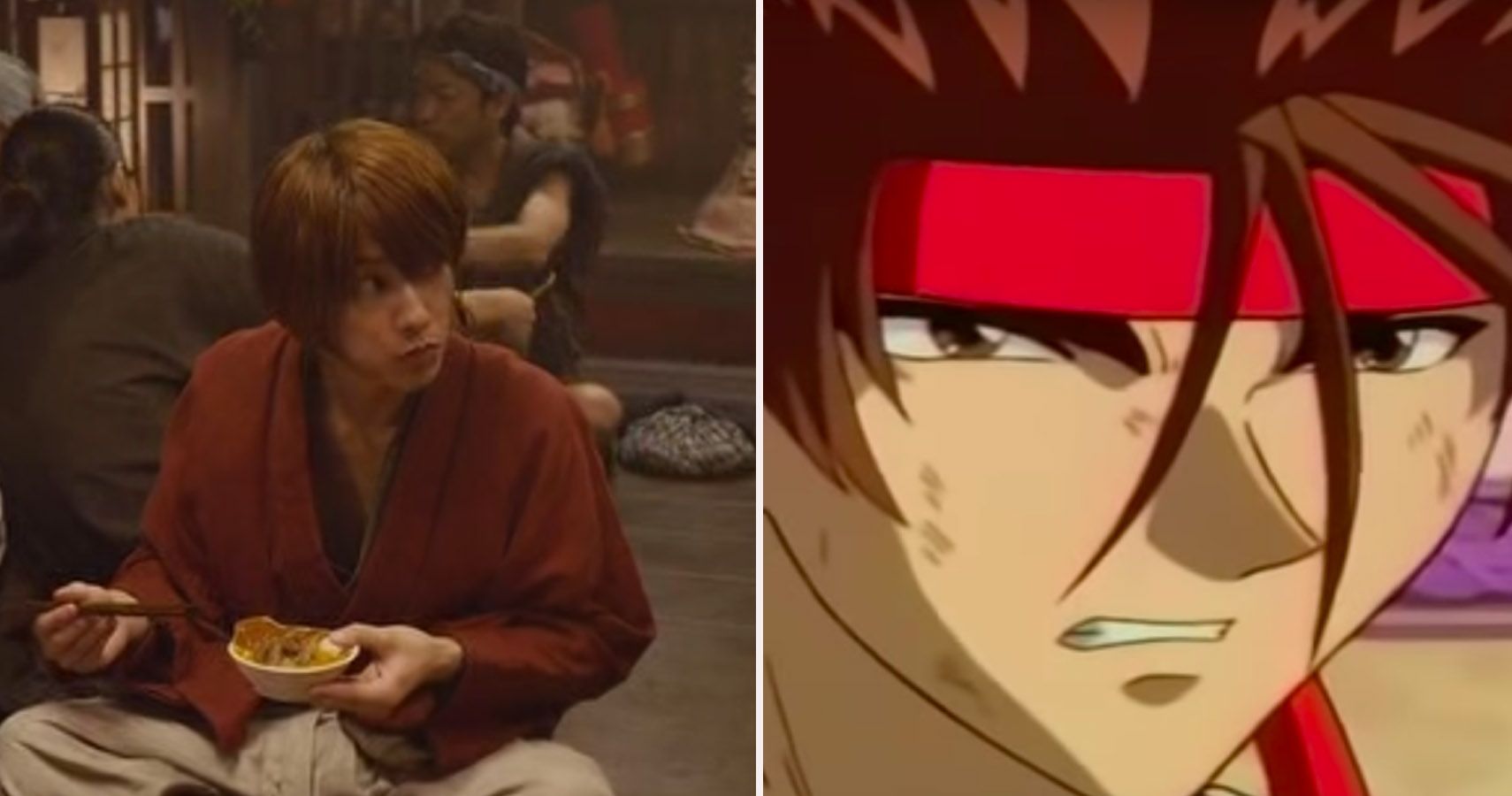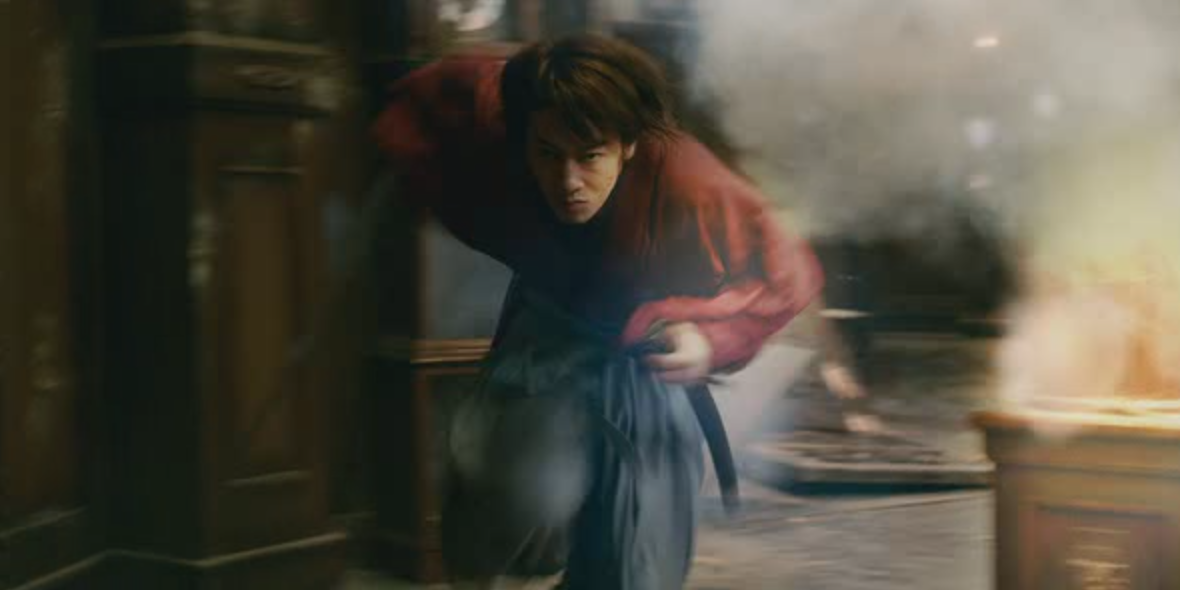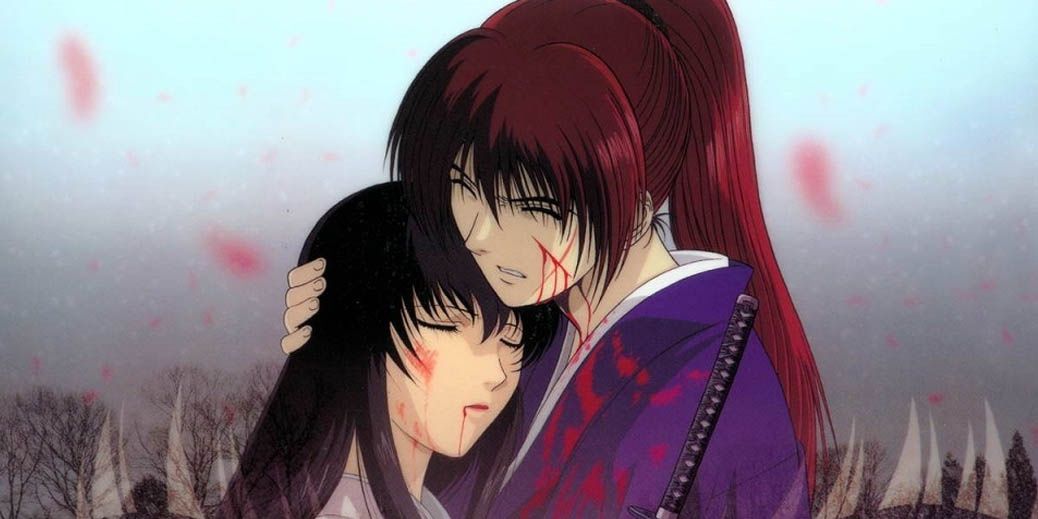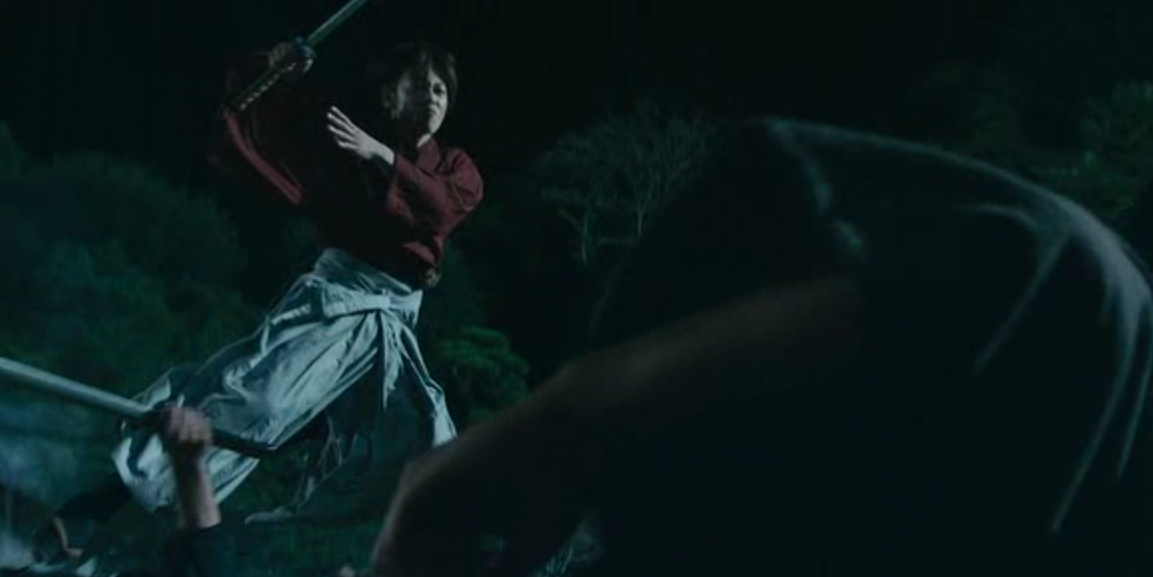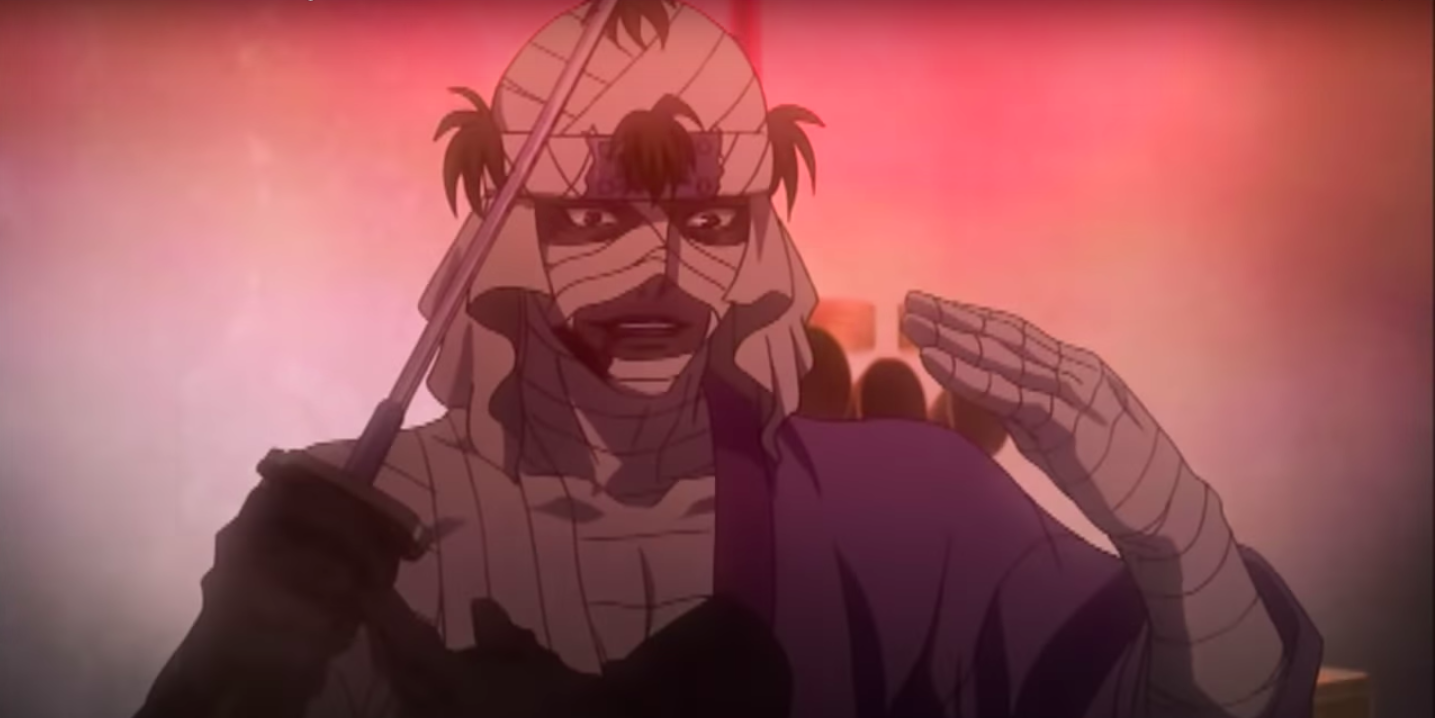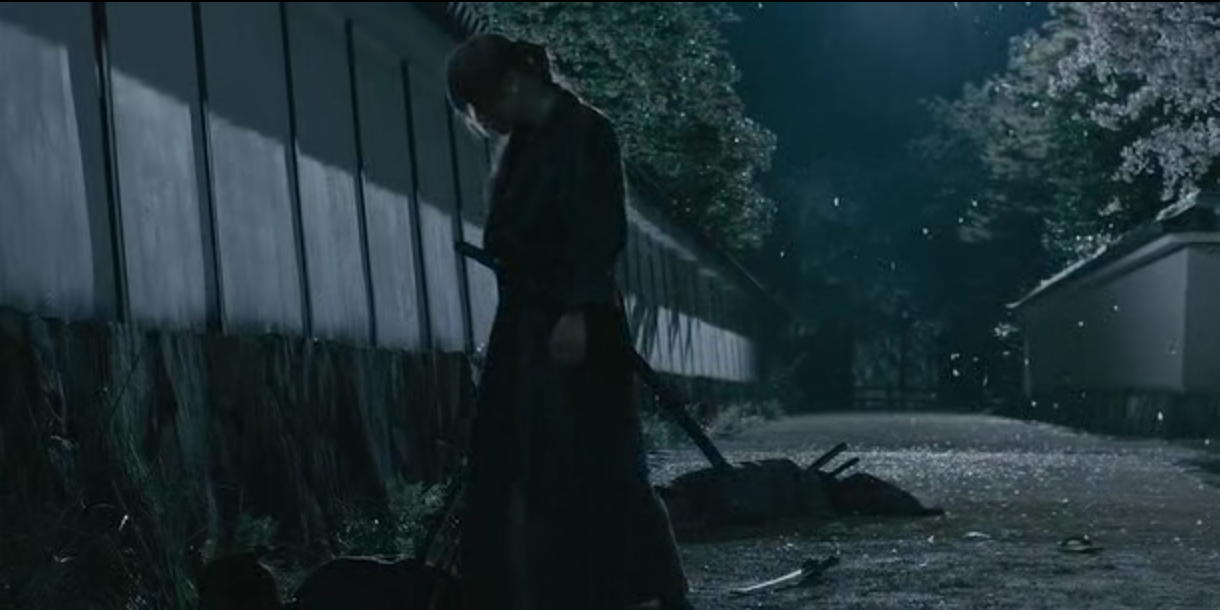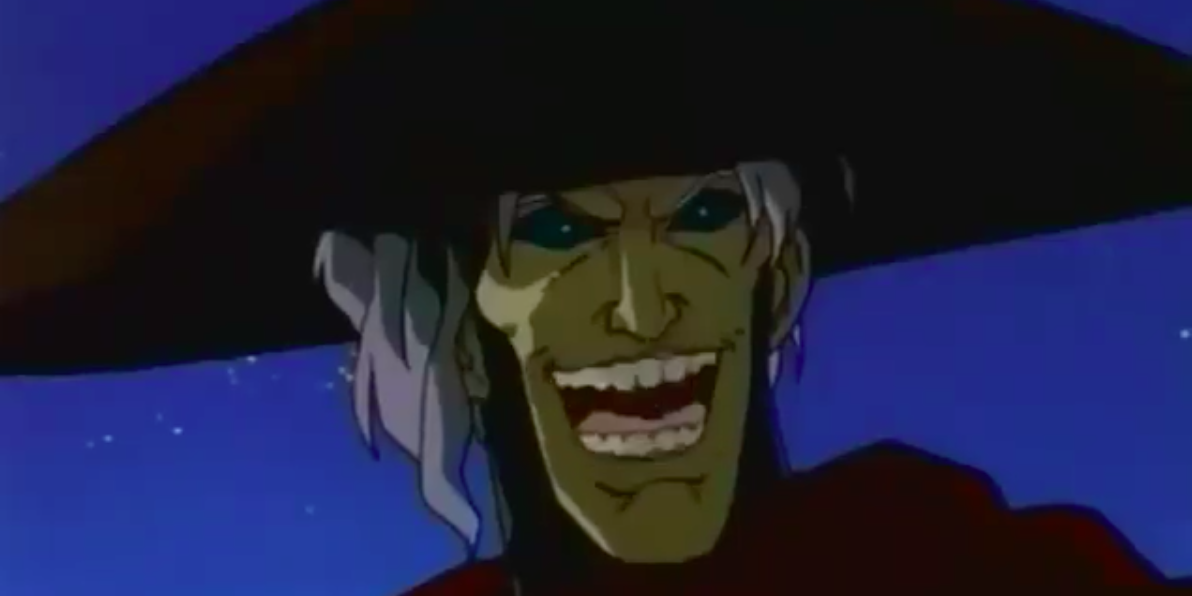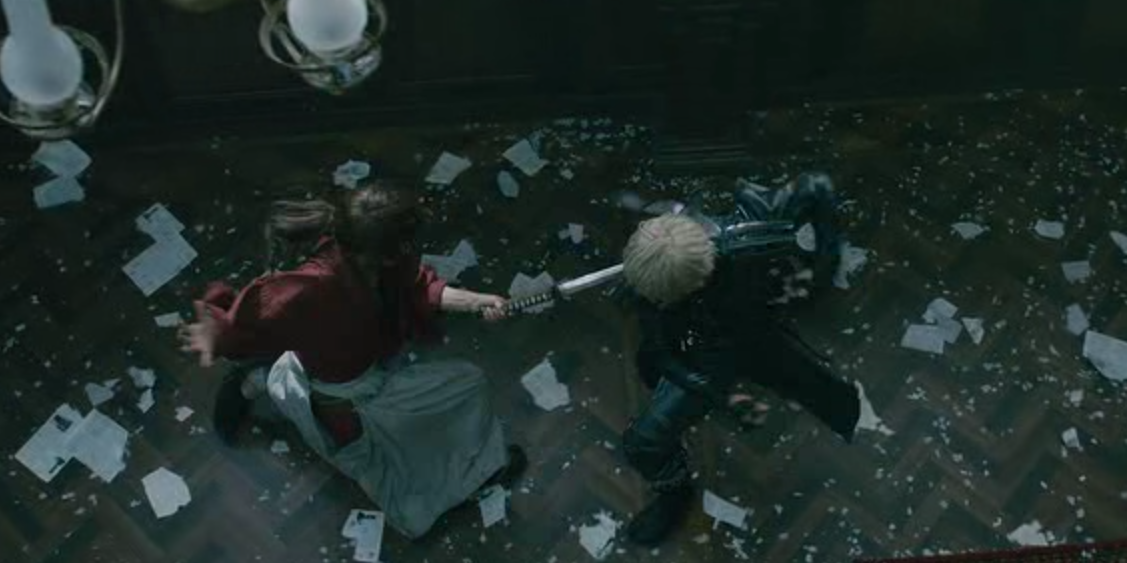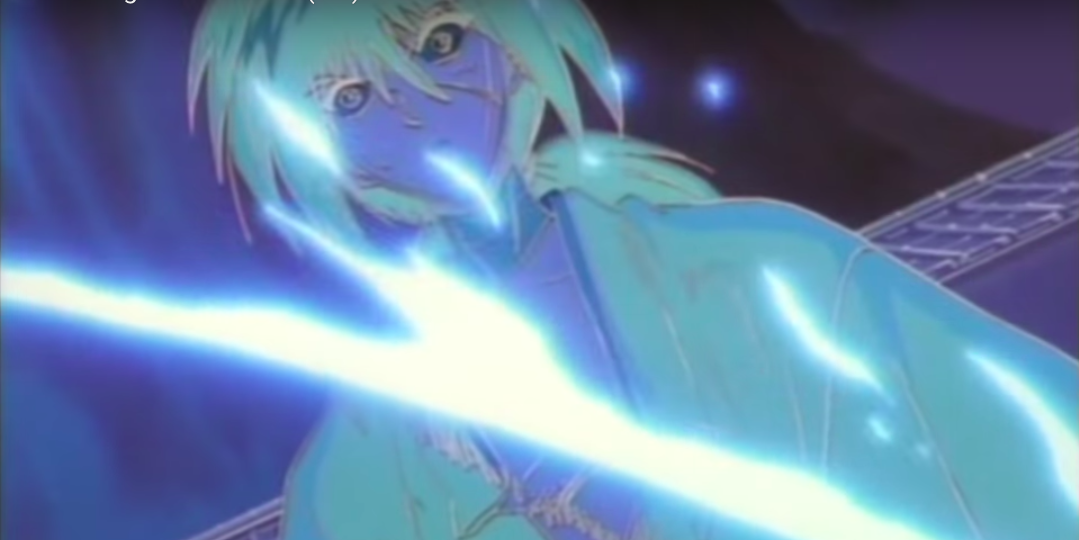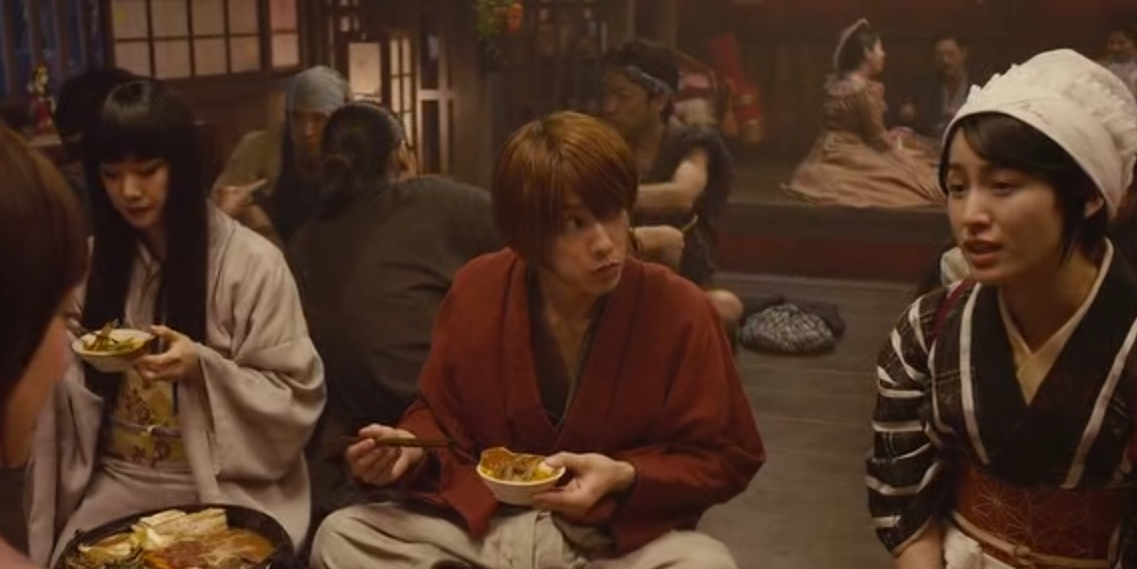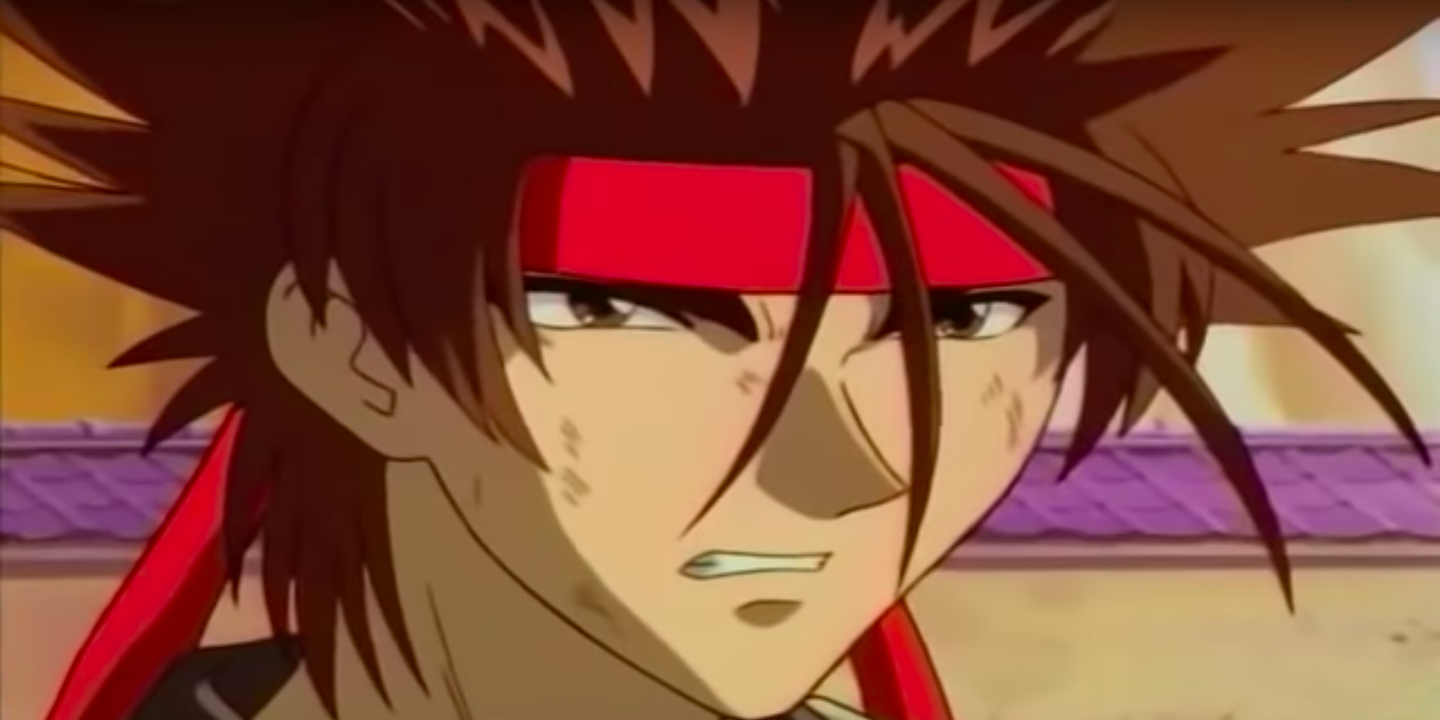Rurouni Kenshin is the classic anime about a wandering samurai, a legendary assassin from the Boshin War who has since given up killing, carrying around a katana with its edge reversed so the sharp side always faces him as he wields it. This red-haired martial artist, Himura Kenshin, was known by the fearsome nickname Hittokiri Battosai (a name which roughly translates as the Manslayer who Swiftly Draws his Sword).
The anime was adapted into a trilogy of live-action movies that worked to reinvigorate the franchise. Like with any adaptation, some things were handled well in the adaptation, while some were better in the original. Here are five things the live-action movie got right and five the anime did better.
10 Live-Action: Kenshin's Movements
There are some things that make or break a cinematic adaptation. For a story like Rurouni Kenshin whose very title is named after its iconic protagonist, it is imperative that he feels believable. This is no easy feat, as in the anime Kenshin is drawn with a unique style that illustrates how every motion is weighed down by his past sins, childlike pursuits of joy despite his grief, and an unparalleled martial prowess that allows him to move with superhuman agility.
Actor Satoh Takeru does a phenomenal job replicating the way Kenshin moves, switching between stiff reserved gestures that show self-control and kinetic explosions of movement that capture the way the Battosai runs low to the ground, cuts through enemies, and dominates a battlefield. That said, Takeru just as easily shows the lighthearted joy the character takes at simple pleasures, smiling as easily as he fights.
9 Anime: Kenshin's Past
The 1999 Rurouni Kenshin OVA entitled Trust & Betrayal (and originally released in many English-speaking countries with the title Samurai X: Trust & Betrayal) tells all about Kenshin's origins. It is a somber and tragic story set during the Bakumatsu - the time period when the rule of the Tokugawa Shogunate was losing power to supporters of the Meiji Emperor. In the story, Kenshin fights for the Imperialists against the forces of the Shogunate. He is the deadliest assassin of the war, but for all his skills, he cannot save himself from the pain and destruction caused by his actions.
The live-action movies recreate some parts of this story but the scenes feel flat, crammed into a larger narrative where they don't have time to stand on their own and their impact is robbed of substance.
8 Live-Action: Fight Scenes
The 2012 live-action film opens during one of the major conflicts of the Boshin War, the Battle of Toba-Fushimi, a fight where swordsmen clashed with soldiers wielding modern rifles. Honestly, this first movie has some of the best fight scenes to come out of any live-action anime adaptation, while its sequels build upon this success with spectacular battles.
From the intensely personal duels to the sprawling engagements against large forces, there is so much to love. In one particular scene, Kenshin defeats a gang of twenty ruffians who are harassing a local dojo and takes the time mid-fight to remove his shoes and bow before entering the dojo. When he is challenged by Sanosuke, a roughneck with a massively oversized sword, the heft of the giant horse-cleaving blade is felt with every movement.
7 Anime: Shishio
One of the main villains of the series is Shishio Makato, a deadly killer who replaced Kenshin as the main assassin of the Imperial forces after Kenshin retired. While Shishio was a master at cutting the life from men, he was betrayed by his government and set aflame. He survived this ordeal but spent the rest of his life wrapped in bandages, deformed by his burns. He sought vengeance against Kenshin, whom he targeted as the object of his hate.
Unfortunately, the costuming for Shishio in the live-action movies has resulted in bandages that look a lot more like plastic glued onto his face than actual medical wrappings.
6 Live-Action: Set Designs
The sets in the live-action movies are absolutely stunning. Every single one of these sets is completely immersive. The wooden and bamboo architecture of Kaoru's family dojo feels like a place swordsmen would spar. When the characters go out for a meal crowded izakaya, the tables and rooms are believably laid out.
Where this comes into full effect is during the sprawling battle scenes where the environment shapes the flow of combat, as seen in the climax of the original movie or a fight in a massacred village in Rurouni Kenshin: Kyoto Inferno. These do not look like well made movie sets. They look like the places where the story is unfolding.
5 Anime: Villains
An anime has more time to showcase individual characters and their evolution so that every character gets a chance to shine. In the case of the main series for Rurouni Kenshin, the various villains and antagonists are able to be more developed, as in the case of the grinning assassin Udo Jin-e and the conniving opium peddler Takeda Kanryu.
Furthermore, anime characters have a tendency to be melodramatic. While the actors do a superb job of adapting the source material, some things that can work in anime just don't feel natural in live-action.
4 Live-Action: Cinematography
The cinematography of the live-action films is masterful. In particular, during the action sequences, the cameras switch between tight short close-ups that showcase specialized martial arts techniques and longer sweeping camera movements that show the scope of a battle as multiple combatants engage one another. This smart camerawork recreates the effects of what stylized animation does in the animated version.
For the quieter moments, the presence of the camera is never felt, allowing the characters to take the spotlight, occasionally moving between them while following the movements of the characters themselves.
3 Anime: Aesthetic
Some things just can't be done in live-action movies. While the CGI has finally developed to a point that it can visually recreate images, the more stylized and over-the-top aspects of anime just do not translate into live-action without looking silly.
Flashes of light emphasize the force when blows are struck. Fire igniting as blades spark when they clang against one another. Characters move so quickly they disappear from sight. These all look cool in the anime and use the medium to give Rurouni Kenshin its unique style.
2 Live-Action: Kenshin Himself
Kenshin is a complex character. He was denied a proper childhood, being turned into a killer while he was still quite young. As an adult, he smiles easily with almost childlike joy at times but is just as often weighed down by his past. There is an unrefined vagabond quality to him, contrasted with his masterful poise in battle.
While it has already been addressed that actor Satoh Takeru moves like Kenshin, the man deserves credit for also capturing the affectations of Kenshin's speech and the full range of his mood. All of this comes together with the beautiful costuming to make it look like Satoh really is the legendary Battosai.
1 Anime: Secondary Characters
Some of the wonderful secondary characters from the anime who made it into the live-action movies include the garrulous battle-happy brawler Sanosuke, the devoted Kaoru who runs her family's dojo, and the teenage ninja Misao. All of these characters are quite memorable and the actors who played the roles did a fantastic job.
That said, the anime just does a better job of allowing these rich secondary characters to stand out. The time given to developing each over the course of the series makes them stand out as unique and allows for audiences to care more about each of them.

